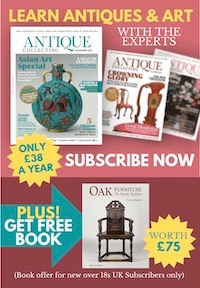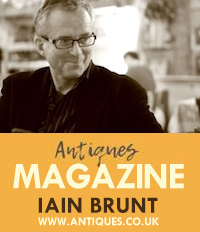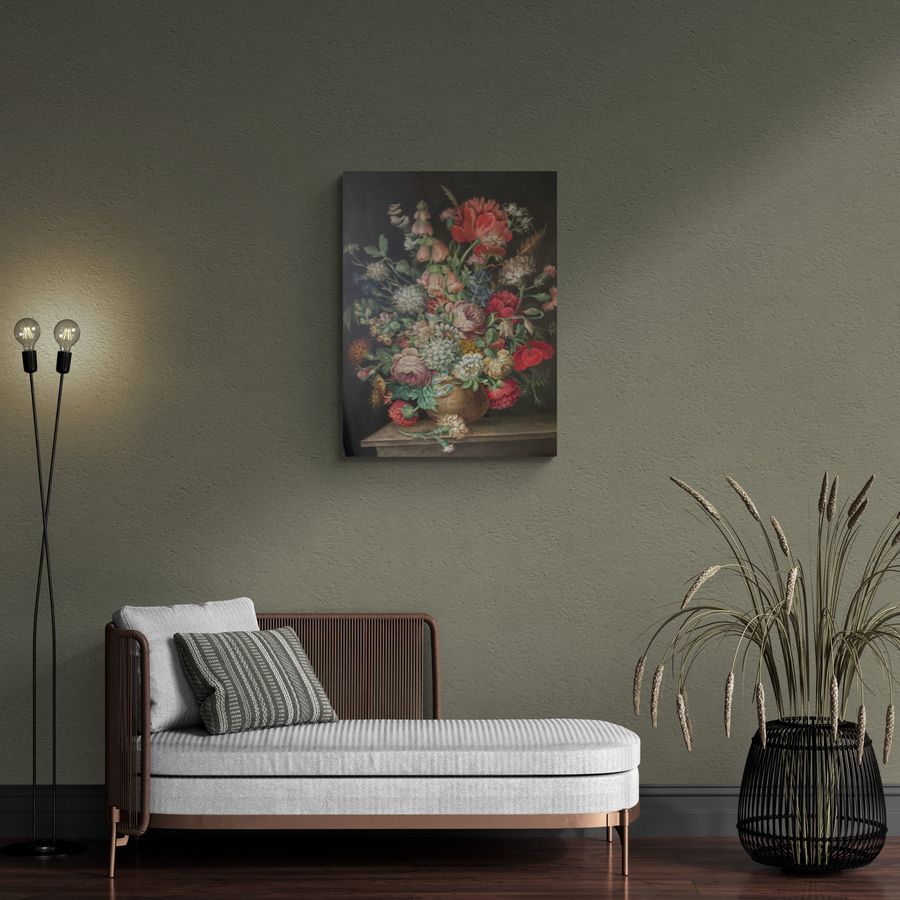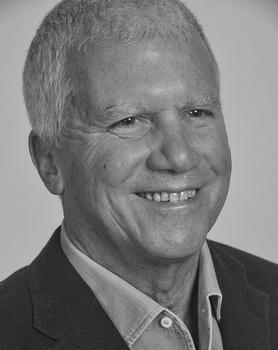Larry Gagosian
Posted by Alain Elkann on 30/10/2019
GLOBAL ART. The art dealer Larry Gagosian has evolved his business into a global network of seventeen exhibition spaces with a vibrant contemporary program that features the work of leading international artists.
Larry Gagosian did you ever think that you would become a global man with art galleries that span the world?
I wasn’t sure I would become anything.
Were you an ambitious child?
I had a lot of energy, I liked sports and I was always busy. Ambition really didn’t kick in until later in my life. To me, ambition is energy with a purpose. There was always the energy, but there was no purpose.
Did you participate in the ‘68 revolution and join the hippy movement?
As a student at UCLA I associated with people who opposed the Vietnam War, which was terrifying. It was a frightening thought to go to Vietnam and fight. Luckily I wasn’t drafted. I don’t know why.
What did you do after UCLA?
I graduated in literature and had a poorly paid but interesting job with the William Morris Agency. It wasn’t my future to become an agent and I left, but with no other career path. I wasn’t going to be a lawyer or a doctor, and the idea of being a businessman wasn’t interesting because I was a product of the ‘60s. I was working as a parking lot attendant to make some money when I saw somebody selling posters, and I copied their business and I started selling posters on the sidewalk.
And it worked?
I was able to sell posters, but it’s important to note that I wasn’t selling posters because I thought this was a gateway to being an art dealer. I didn’t understand that there was such a career. It was just something to sell when I was 27 or 28.
Were you a good salesman?
I liked talking to people, I liked closing the sale. I liked putting money in my pocket, it was a nice feeling. I started selling more expensive posters, because I realized that if I sold a poster for two hundred dollars I’d make money faster than selling one for fifteen dollars. That’s when I started becoming ambitious, and started looking at art in a different way. I saw that it had commercial value, not just aesthetic value.
How did you become knowledgeable?
My family never took me to a gallery or a museum. It just clicked with me. I was a latent art lover.
Who was the first artist you showed?
My first show in 1977 was of Vija Celmins‘ lithographs, maybe eight of them. I can’t remember the exact number, but I was able to get every one that she had made. She has a show right now at the Met Breuer.
“Somebody wants a certain painting, I try to find it. I like being given an assignment.”

Damien Hirst, Colour Space Paintings, May 4 – August 10, 2018, Gagosian, 555 West 24 Street, New York, NY 10011. Artwork © Damien Hirst and Science Ltd. All rights reserved, DACS 2018.
Photo: Robert McKeever. Courtesy Gagosian.
Larry Gagosian, how did you understand that New York was the right city for you?
Well, there was a big art industry in New York.
Where you immediately became friendly and associated with the very successful art dealer Leo Castelli?
I was lucky. I was interested in the photographer, Ralph Gibson. I called him up and asked him if he would give me some photographs to sell, and he said: OK, but you have to come to my studio. I went to visit him and that was my first trip to New York. He was represented by Leo Castelli.
Whose friend and successor you became?
I wouldn’t say successor, but I became a friend. When Leo realized that I could be effective, he gave me access to his inventory and his artists’ studios. I met artists through him and I could go to Lichtenstein‘s studio, to Jasper Johns‘ studio. Leo was very important because his association with me gave me a credibility that I most likely wouldn’t have gotten otherwise.
Did he also teach you the business?
I observed the way he did business, but we were different kinds of people. He was quite European and always had a beautiful suit on, with a tie. That was never my style. He exposed me to things, and we became good friends. We actually ended up having a partnership. He wanted a young guy who could hustle.
The art world in New York then must have been very different from today?
Slower, smaller, less money. A painting in Leo’s back room would be there six months later. There wasn’t that urgency, there wasn’t the Internet, but even at that point I started to make money.
You met Andy Warhol?
I became good friends with Warhol. He would let me sell paintings. We did a show together. It was fantastic. I also became very close to Jean-Michel Basquiat, who ended up living with me in the same house in Venice Beach, California. In ‘79 I was still based in Los Angeles.
Basquiat was not very well known then?
He was known. He made quite an impact. I met him when he was just starting. He was in a group show and I bought every painting of his that was there before I even knew who he was. Once I got going, I moved very fast.
When did you open a gallery in New York?
When I was in New York I used to sell paintings out of my loft in a residential building across the street from Leo Castelli on West Broadway. I wasn’t looking for a gallery but I got my first gallery in Chelsea, on 23rd Street, just off 10th Avenue, when a friend of mine took me to visit a 10 story building owned by Sandro Chia from whom he was going to rent the second floor. When I saw the ground floor I rented it from Chia for $3,000 a month. The space was like a truck dock, like dirt, so I spent some money to make it look like a gallery. The first show I did there was with masterpieces from the unbelievable Pop Art collection of Burton and Emily Tremaine.
Did you sell them?
I sold one. I sold a great Rauschenberg.
Did you already know the collector Charles Saatchi?
I met him around ‘79, and then he became a good friend of mine.
How did you meet the collector “S.I.” Newhouse?
Through Leo. We were walking across West Broadway one day, when Leo stops literally in the middle of the street and shakes hands with this guy who looked like he didn’t have five dollars. He didn’t look like an impressive art collector. I said to Leo: who was that you just greeted? He said: that’s Si Newhouse. He can afford to buy any painting you want. I’ll never forget his words. I said: would you introduce me to him? He said: sure. I called Newhouse up the next day and went over to see him in his beautiful townhouse on 70th Street. I did a lot of business with him. Si was a big client of mine.
What is your job?
Somebody wants a certain painting, I try to find it. I like being given an assignment. As you work longer you know where more paintings are, but then there’s more competition to get those paintings. In the beginning, when I was working with Newhouse, there weren’t many dealers operating at that level, selling paintings for 10 to 15 million dollars. That’s like 100 million dollars today.
There is a lot of competition in your profession?
Yes, because being an art dealer is a good profession and it’s very exciting. It’s a great job. I have access to some of the most interesting people in the world, that I wouldn’t have access to if I was doing something else.
Who were the big name artists when you started?
Giacometti, Mondrian, Pollock.
You knew that there was a Pollock somewhere and you’d convince the owner to sell it?
Exactly.
“Gagosian is a brand. I didn’t intend to make it into a brand, that was never my objective. It became a brand.”
Lasrry Gagosian, when did start working with Richard Serra?
My first show of Richard Serra was 1983, 36 years ago. He wasn’t as established then.
Is it your talent to know how to deal with artists?
I have a good rapport with artists. I like young, unknown artists. I’m still interested in finding new works. Some artists are easier to get along with than others. I’ve a good eye for art. I understand what is quality. I see things pretty quickly, I’m good with people, and I’m good with customers. Something written about me recently said that Larry’s a collector’s dealer, not an artist’s dealer. Which is not true at all. I’ve spent a lot of time working with artists and going to the studios of the artists that I represent – Joe Bradley‘s studio, Urs Fischer‘s studio, John Currin‘s studio, Rudolf Stingel‘s studio, Mark Grotjahn‘s’ studio…
Now that you have 17 galleries all over the world, how do you run them all?
You just work. You stay in touch. You’re on the phone, you email. I have 250 to 300 of the best people working for me. I talk to the very committed gallery directors all the time. If you have 17 galleries you have to have really good people, keep them motivated, keep them engaged and make them feel like they’re part of something that’s exciting so they give you a lot of energy. I have dedicated people, otherwise I couldn’t run this many galleries.
You are known to do exhibitions at museum level, and now also have your Gagosian Quarterly magazine?
Our circulation is 60,000, with masses of advertising. I’ll tell you a funny thing. When I started this magazine a Ralph Lauren ad was hard to get. Now we get Hermès, who do very little print advertising these days. When I wanted to go for this luxury ad market the people I am close to said: it’s a bad idea, the artists are going to hate it. They’re going to think it’s too commercial and they’re going to be upset. Don’t do it. I said: I don’t think it’s going to be a problem, and I’m going to do it. The first person to compliment me on it was Richard Serra, the one I was probably most frightened of his reaction.
Do you spend a lot on promotion?
I promote the artists. I promote the gallery. I don’t like the word or the concept because it’s a little vulgar, but Gagosian is a brand. I didn’t intend to make it into a brand, that was never my objective. It became a brand. I have a Japanese restaurant now, and a bookshop. Stuff like that keeps my juices going and I like working on different things.
Several different architects have designed your galleries?
Yes, from Jean Nouvel to Richard Meier. The Caruso St John team have done almost all of our galleries in Europe.
Do you still go to the auctions?
I go to the auctions to buy a painting. I like to bid in person. I used to go when I just wanted to sit there and be part of it and see what was going on. It can be confusing, because you can have a great artist and a lousy painting. Let’s say a Jackson Pollock doesn’t sell. Does it mean Pollock’s no good anymore? No. The business side of the art press sometimes very unfairly will say an artist is bad, because it’s a shitty painting by a great artist. You have to really understand the market and understand how that painting stacks up.
When you buy a painting, do you buy for yourself or others?
Either you buy for your own collection, or you buy for inventory, or you buy for a customer. Those are the three categories.
Do you have an important private collection?
I have a very good private collection, primarily contemporary artists that I represent. I’ve got quite a few Picassos, a beautiful Mondrian, some classical things, Giacometti. I have a wonderful collection of Cy Twombly, and a wonderful collection of Warhol.
Do you sometimes sell pieces from your own collection?
Sometimes you need to sell. You want the money because you have a purpose for it. I don’t like to sell out of my private collection. I do it reluctantly, but I do it occasionally.

Larry Gagosian and Jean-Michel Basquiat (date unknown) Courtesy Gagosian.

Larry Gagosian, Charles Saatchi and Leo Castelli, St. Barthelemy, 1991 © Jean Pigozzi. Courtesy Gagosian.

Richard Serra, Reverse Curve, 2005/2019, Weatherproof steel Overall: 13′ 1 1/2″ x 99′ 9″ x 19′ 7″; Plate: 2″ thick © 2019 Richard Serra/Artists Rights Society (ARS), New York. Photo: Cristiano. Courtesy Gagosian.
At Gagosian, 522 West 21st Street, New York September 17, 2019–February 1, 2020

Taryn Simon, Paperwork and the Will of Capital, April 14 – June 24, 2016, Gagosian, Via Francesco Crispi 16, 00187 Rome. Artwork © Taryn Simon. Photo: Matteo D’Eletto. Courtesy Gagosian.

Jeff Koons, New Paintings and Sculpture, May 9 – June 29, 2013, Gagosian, 555 West 24 Street, New York, NY 10011. Artwork © Jeff Koons. Photo: Robert McKeever. Courtesy Gagosian.

Gagosian Gallery Rome. Via Francesco Crispi 16. Photo: Luigi Filetici. Courtesy Gagosian
“Being an art dealer is a good profession and it’s very exciting. It’s a great job.”
Larry Gagosian, the market has changed since you started?
The numbers are much, much bigger prices. There’s a lot of money, but the people who invest in art really like art. I’m not cynical about the motivation. People who buy art, and I know a lot of them, buy because there’s a certain passion. There’s also pride of ownership. And there’s also this investment, because good art has proven to be – over a long period of time – one of the best investments.
Now young people are making and investing a lot of money?
Yes, luckily they seem to be attracted to art, primarily of their generation. Sometimes you have a young person that collects Rembrandt etchings, but that’s unusual.
Will the market stay high?
The market always goes in cycles. The whole market can go down. I’ve seen several recessions in the art market. That’s a good time to buy. You need to have cash for when the market’s bad.
Is America still the center of art nowadays?
Most of the buyers of art globally are American. Perhaps two thirds of the art market is American. China was a big market for me but because of Hong Kong and the political situation and also the trade war they’ve really cut back on their art buying. That’s been a disappointment.
Will prices for artists like Picasso remain stable?
Picasso is such an important area. I’ve done many, many Picasso shows. John Richardson‘s memorial is coming up now. Picasso is here to stay.
Is it a big gamble to spend so much money on art?
You’ve gotta be able to afford it. You shouldn’t gamble more than you can afford to lose. If you like the art, even if the price goes down you still have the art. When you buy a stock in a company and it goes down, you don’t have much to enjoy. It’s painful, because you’re just losing money. Art goes in cycles, always, and there’s no guarantee. The more you pay, usually, the safer it is. The lower the price the more speculative it is.
Can the Larry Gagosian brand make an artist?
A powerful gallery like mine can give an artist a great boost in the beginning, but the only way that market can continue to grow and be sustained is if the work remains interesting and people want to collect it and buy it, and museums support it.
Do you like it that your business has become so big?
I like it that way. People said: why don’t you just stay in the little gallery in Chelsea? They don’t say that anymore because they realize I’m crazy and there’s no point in trying to be rational. For some reason I enjoy the challenge of the complexity.
Do you like taking risks?
In business, if you don’t risk, if you’re not willing to fail, then you paralyze. There’s no guarantee when you make a business decision. You use your best judgment, but sometimes you make a mistake.
How do you feel now that you have become a wealthy and powerful person?
I don’t think of myself that way. I feel the same. I still feel hungry, competitive.
How do you enjoy your life?
By having a successful gallery. (he laughs). I am a hard worker, but I don’t work all the time.
Today is the art world, in the sense of the artists and the art itself, as interesting as when you began?
Yes, indeed. Yes. Yes. I’m very excited by the artists that I represent. I love going to studios, seeing what they’re doing. It’s a treat.
New York City.






